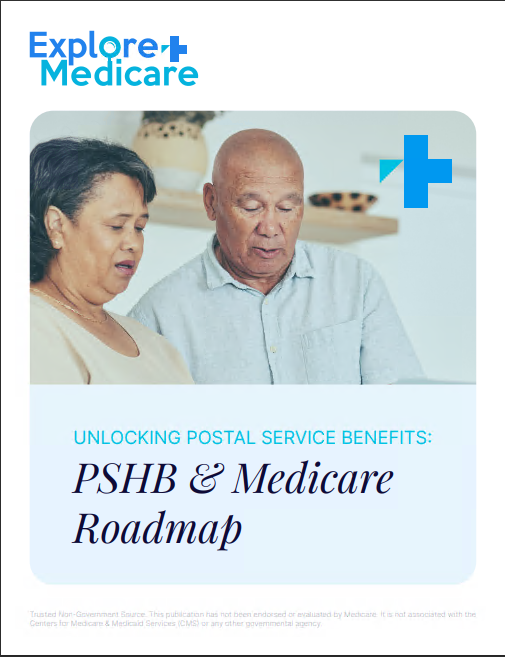Key Takeaways
-
Understanding Medicare’s drug coverage structure helps you avoid unexpected costs and ensures you get the right medication support throughout the year.
-
Planning around drug formularies, enrollment periods, and coordination with other coverage can prevent delays and denials.
Understanding the Basics of Medicare Drug Coverage
If you’re enrolled in Medicare or planning to sign up soon, it’s important to know how prescription drug coverage works. Medicare provides prescription drug benefits through Part D, but not all plans cover the same medications. That’s where your strategy begins.
You may get drug coverage in two ways:
-
Through a standalone Medicare Part D plan
-
As part of a Medicare Advantage plan that includes drug coverage
While these options may look similar, their formularies, pharmacies, and approval requirements can differ significantly. In 2025, the Part D coverage includes new cost protections, including a $2,000 out-of-pocket cap.
How Formularies Affect Your Medication Access
A drug formulary is the list of medications a plan covers. These lists are organized into tiers, with each tier determining how much you pay out of pocket.
-
Tier 1: Preferred generics, typically with the lowest cost
-
Tier 2: Non-preferred generics or low-cost brand drugs
-
Tier 3: Preferred brand-name medications
-
Tier 4: Non-preferred brand-name or specialty medications
Plans can update their formularies throughout the year, but they must give you a 60-day notice. Make it a habit to review your plan’s formulary every January and during the Annual Enrollment Period (October 15 to December 7).
Prior Authorization and Step Therapy Rules
Even if your medication is on the formulary, you might need additional approvals. These include:
-
Prior authorization: Your doctor must provide proof that the drug is medically necessary.
-
Step therapy: You may be required to try a lower-cost drug first before moving to a more expensive one.
Understanding these rules ahead of time prevents delays in accessing your medication.
How the $2,000 Out-of-Pocket Cap Works in 2025
As of 2025, the Medicare Part D program includes an annual cap on out-of-pocket spending for prescription drugs. This change eliminates the old coverage gap or “donut hole.”
Here’s how the phases work:
-
Deductible Phase: You pay up to the plan’s deductible (maximum $590 in 2025).
-
Initial Coverage Phase: You pay a share of your medication cost until your total out-of-pocket spending reaches $2,000.
-
Catastrophic Phase: Once you hit the cap, your plan covers 100% of your covered drug costs for the rest of the year.
This new structure provides peace of mind, especially if you take expensive or multiple prescriptions.
Smart Planning During Enrollment Periods
Timing matters. Each year, Medicare provides specific periods to enroll, switch, or make changes to your coverage:
-
Initial Enrollment Period: A 7-month window around your 65th birthday
-
Annual Enrollment Period: October 15 to December 7
-
Medicare Advantage Open Enrollment: January 1 to March 31 (for switching plans or returning to Original Medicare)
During these periods, review your medication list and compare it to each plan’s formulary. Confirm that:
-
Your prescriptions are still covered
-
Your pharmacy is in-network
-
There are no new restrictions (like prior authorization)
The Role of Preferred Pharmacies and Mail-Order Services
Where you get your prescriptions filled can impact what you pay. Many plans have preferred pharmacies offering lower copayments than standard retail locations.
Mail-order services are also popular and often offer a 90-day supply at a lower cost. This can be a convenient and cost-effective solution if you’re on maintenance medications.
Things to consider:
-
Check if your plan requires you to use a specific pharmacy network
-
Ensure that your preferred pharmacy is considered “preferred” to get lower costs
-
Review delivery times and options if using mail-order
Coordinating Drug Coverage With Other Insurance
Some people have additional coverage that works with Medicare, such as:
-
Employer or retiree health plans
-
Veterans Affairs (VA) benefits
-
Medicaid
-
TRICARE
If you have other coverage, understand which plan pays first. Medicare typically acts as a secondary payer in these cases. Not coordinating benefits correctly can lead to higher costs or denied claims.
Call your plan administrators or review your benefit materials to confirm how the coordination works.
Medication Therapy Management (MTM) Services
MTM is a free service offered by many Part D plans to help you manage your medications safely and effectively. You may qualify for MTM if you:
-
Take multiple chronic medications
-
Have certain health conditions like diabetes or heart failure
-
Spend more than a set threshold on medications annually
In 2025, these services include:
-
Comprehensive medication reviews
-
Drug interaction checks
-
Help with medication adherence
These programs are designed to improve outcomes and reduce unnecessary spending.
Avoiding Late Enrollment Penalties
If you delay enrolling in Part D without having creditable drug coverage (coverage considered as good as Medicare’s), you may face a penalty later. This penalty increases the longer you go without coverage and applies for as long as you remain in Medicare.
To avoid this:
-
Enroll during your Initial Enrollment Period, even if you don’t take any medications now
-
Keep proof of creditable coverage if you’re covered elsewhere
In 2025, the penalty is calculated as 1% of the national base beneficiary premium for each month you went without creditable coverage.
What to Do If Your Medication Isn’t Covered
If your medication isn’t listed on your plan’s formulary, you still have options:
-
Request an exception: Your doctor can submit a formal request explaining why you need the drug.
-
File an appeal: If the exception is denied, you can appeal the decision.
-
Switch plans: During an enrollment period, you can choose a plan that covers your medication.
Start with your prescriber—they can help you gather supporting information to improve your chances of approval.
Staying Informed Year After Year
Medicare plans update their formularies, costs, and rules annually. You should receive an Annual Notice of Change (ANOC) from your plan each September outlining these updates.
Don’t ignore this document. Compare it against your current medication list and see if anything has changed. If it has, consider your options before the Annual Enrollment Period closes on December 7.
Questions to ask yourself every fall:
-
Has my plan removed any of my medications?
-
Are there new prior authorization or quantity limits?
-
Would another plan offer better coverage for what I need?
Creating a Long-Term Medication Coverage Strategy
Your prescription needs may change over time. Building a long-term strategy can help you stay ahead of unexpected costs or drug access issues.
Here’s how to start:
-
Track your medications: Keep an updated list of prescriptions, dosages, and costs
-
Review plans annually: Never assume your current plan is still the best fit
-
Engage your doctor: Ask about generics, alternatives, or therapies that could be covered more easily
-
Use plan tools: Most Medicare plans offer online portals where you can estimate drug costs and track benefits usage
Developing this strategy doesn’t require extensive effort, but it does require consistency. Take the time each year to review, reassess, and adjust.
Choosing the Right Path to Medication Support
Getting your medications covered under Medicare in 2025 isn’t automatic—it takes careful planning and ongoing attention. From understanding formularies and cost caps to using the right pharmacies and avoiding penalties, your decisions affect your budget and your health.
Stay proactive. Reassess your plan every fall. Use tools and resources available through Medicare. And if you’re ever unsure about your options, speak with a licensed agent listed on this website who can help you navigate your coverage with confidence.









